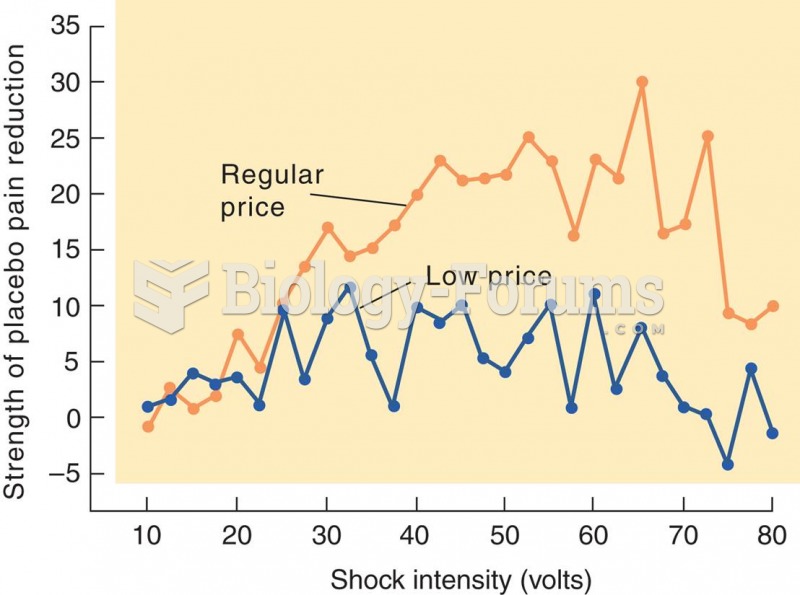|
|
|
There are approximately 3 million unintended pregnancies in the United States each year.
People who have myopia, or nearsightedness, are not able to see objects at a distance but only up close. It occurs when the cornea is either curved too steeply, the eye is too long, or both. This condition is progressive and worsens with time. More than 100 million people in the United States are nearsighted, but only 20% of those are born with the condition. Diet, eye exercise, drug therapy, and corrective lenses can all help manage nearsightedness.
The first documented use of surgical anesthesia in the United States was in Connecticut in 1844.
A seasonal flu vaccine is the best way to reduce the chances you will get seasonal influenza and spread it to others.
To combat osteoporosis, changes in lifestyle and diet are recommended. At-risk patients should include 1,200 to 1,500 mg of calcium daily either via dietary means or with supplements.







